
Dalhousie University is a large public research university in Nova Scotia, Canada, with three campuses in Halifax, a fourth in Bible Hill, and a second medical school campus in Saint John, New Brunswick. Dalhousie offers more than 4,000 courses, and over 200 degree programs in 13 undergraduate, graduate, and professional faculties. The university is a member of the U15, a group of research-intensive universities in Canada.

Andrew Randall Cobb, ARCA, FRIBA was a Canadian-American architect based in Nova Scotia.

Canada's contemporary theatre reflects a rich diversity of regional and cultural identities. Since the late 1960s, there has been a concerted effort to develop the voice of the 'Canadian playwright', which is reflected in the nationally focused programming of many of the country's theatres. Within this 'Canadian voice' are a plurality of perspectives - that of the First Nations, new immigrants, French Canadians, sexual minorities, etc. - and a multitude of theatre companies have been created to specifically service and support these voices.
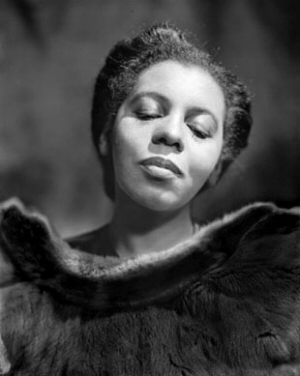
Portia May White was a Canadian contralto, known for becoming the first Black Canadian concert singer to achieve international fame. Growing up as part of her father's church choir in Halifax, Nova Scotia, White competed in local singing competitions as a teenager and later trained at the Halifax Conservatory of Music. In 1941 and 1944, she made her national and international debuts as a singer, receiving critical acclaim for her performances of both classical European music and African-American spirituals. White later completed tours throughout Europe, the Caribbean, and Central and South America.

Halifax is the capital and largest municipality of the Canadian province of Nova Scotia, and the largest municipality in Atlantic Canada. Halifax is one of Canada's fastest growing municipalities, and as of 2022, it is estimated that the CMA population of Halifax was 480,582, with 348,634 people in its urban area. The regional municipality consists of four former municipalities that were amalgamated in 1996: Halifax, Dartmouth, Bedford, and Halifax County.

The Halifax Forum is an arena and multi-purpose facility in Halifax, Nova Scotia. Its uses include sporting events, bingo, ice skating, concerts and markets. It was built in 1927 on the site of the former Nova Scotia Provincial Exhibition which was badly damaged by the Halifax explosion in 1917. It opened on 26 December 1927 and incorporated the first artificial ice surface east of Montreal. It is the second biggest arena in Nova Scotia, and the fifth biggest in Atlantic Canada. The building was added to the Canadian Register of Historic Places in 2003.
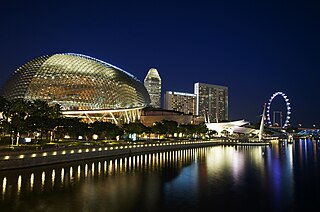
Esplanade – Theatres on the Bay is a statutory board under the Ministry of Culture, Community and Youth (MCCY) and a performing arts centre located in the Downtown Core of Singapore near the mouth of the Singapore River. Named after the nearby Esplanade Park, it consists of a concert hall which seats about 1,600 and a theatre with a capacity of about 2,000 for the performing arts.
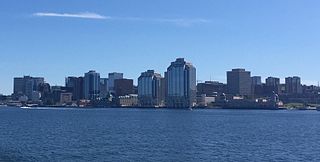
Downtown Halifax is the primary central business district of the Municipality of Halifax. Located on the central-eastern portion of the Halifax Peninsula, on Halifax Harbour. Along with Downtown Dartmouth, and other de facto central business districts within the Municipality, Downtown Halifax serves as the business, entertainment, and tourism hub of the region.

Hosting the region's largest urban population, Halifax, Nova Scotia is an important cultural centre in Atlantic Canada. Halifax is home to a vibrant arts and culture community that enjoys considerable support and participation from the general population. As the largest community and the administrative centre of the Atlantic region since its founding in 1749, Halifax has long-standing tradition of being a cultural generator. While provincial arts and culture policies have tended to distribute investment and support of the arts throughout the province, sometimes to the detriment of more populous Halifax, cultural production in the region is increasingly being recognized for its economic benefits, as well as its purely cultural aspects.

King's-Edgehill School is a Canadian private university-preparatory boarding and day school located in the town of Windsor, Nova Scotia. It is the oldest English independent school in the Commonwealth outside the United Kingdom, founded by United Empire Loyalists as King's Collegiate School in 1788, and granted Royal Charter by King George III in 1802.

The IWK Health Centre is a major pediatric hospital and trauma centre in Halifax, Nova Scotia that provides care to maritime youth, children and women from Nova Scotia, New Brunswick, Prince Edward Island and beyond. The IWK is the largest facility in Atlantic Canada caring for children, youth and adolescents, and is the only Level 1 pediatric trauma centre east of Quebec.

Halifax, Nova Scotia has the largest selection of education options in Atlantic Canada.
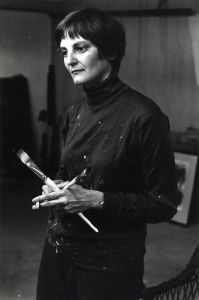
Carol Hoorn Fraser (1930–1991) was an American-born figurative artist who worked for thirty years in Nova Scotia, Canada.
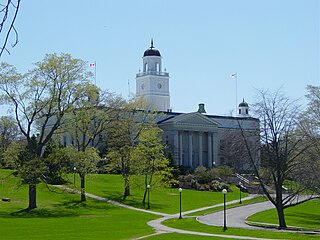
Leslie Raymond Fairn was a Canadian architect whose career is notable for its longevity and for the range of styles it encompassed, including Beaux Arts and Modernism. Most of his work was completed in the Maritimes.

The Grand Parade is an historic military parade square dating from the founding of Halifax in 1749. At the north end of the Grand Parade is the Halifax City Hall, the seat of municipal government in Nova Scotia's Halifax Regional Municipality. At the south end is St. Paul's Church. In the middle of Grand Parade is the cenotaph built originally to commemorate the soldiers who served in World War I.
Ursula Johnson is a multidisciplinary Mi’kmaq artist based in Halifax, Nova Scotia, Canada. Her work combines the Mi’kmaq tradition of basket weaving with sculpture, installation, and performance art. In all its manifestations her work operates as didactic intervention, seeking to both confront and educate her viewers about issues of identity, colonial history, tradition, and cultural practice. In 2017, she won the Sobey Art Award.

Peter Alexander Fillmore is a Canadian Liberal politician who has represented the riding of Halifax in the House of Commons of Canada since 2015.
Mary Vingoe is a Canadian playwright, actor, and theatre director. Vingoe was one of the co-founders of Canadian feminist theatre company Nightwood Theatre and later co-founded Ship's Company Theatre in Parrsboro and Eastern Front Theatre in Halifax. From 2002 to 2007, Vingoe was artistic director of the Magnetic North Theatre Festival. Vingoe is an Officer of the Order of Canada and received the Portia White Prize. Her play Refuge was a shortlisted nominee for the Governor General's Award for English-language drama at the 2016 Governor General's Awards.
Omar Gandhi Architect is a Canadian architectural firm established in 2010, with two small studios located in Halifax, Nova Scotia and Toronto, Ontario. The firm is known for its work blending contemporary architectural style with rural vernacular influences, and for sensitivity to the natural landscape of Canada’s Atlantic coast, where the majority of the work is found.
Shauntay Grant is a Canadian author, poet, playwright, and professor. Between 2009 and 2011, she served as the third poet laureate of Halifax, Nova Scotia. She is known for writing Africville, a children's picture book about a black community by the same name that was razed by the city of Halifax in the 1960s. "Africville" was nominated for a 2018 Governor General’s Literary Award. The book also won the 2019 Marilyn Baillie Picture Book Award, and was among 13 picture books listed on the United States Board on Books for Young People's 2019 USBBY Outstanding International Books List.
















